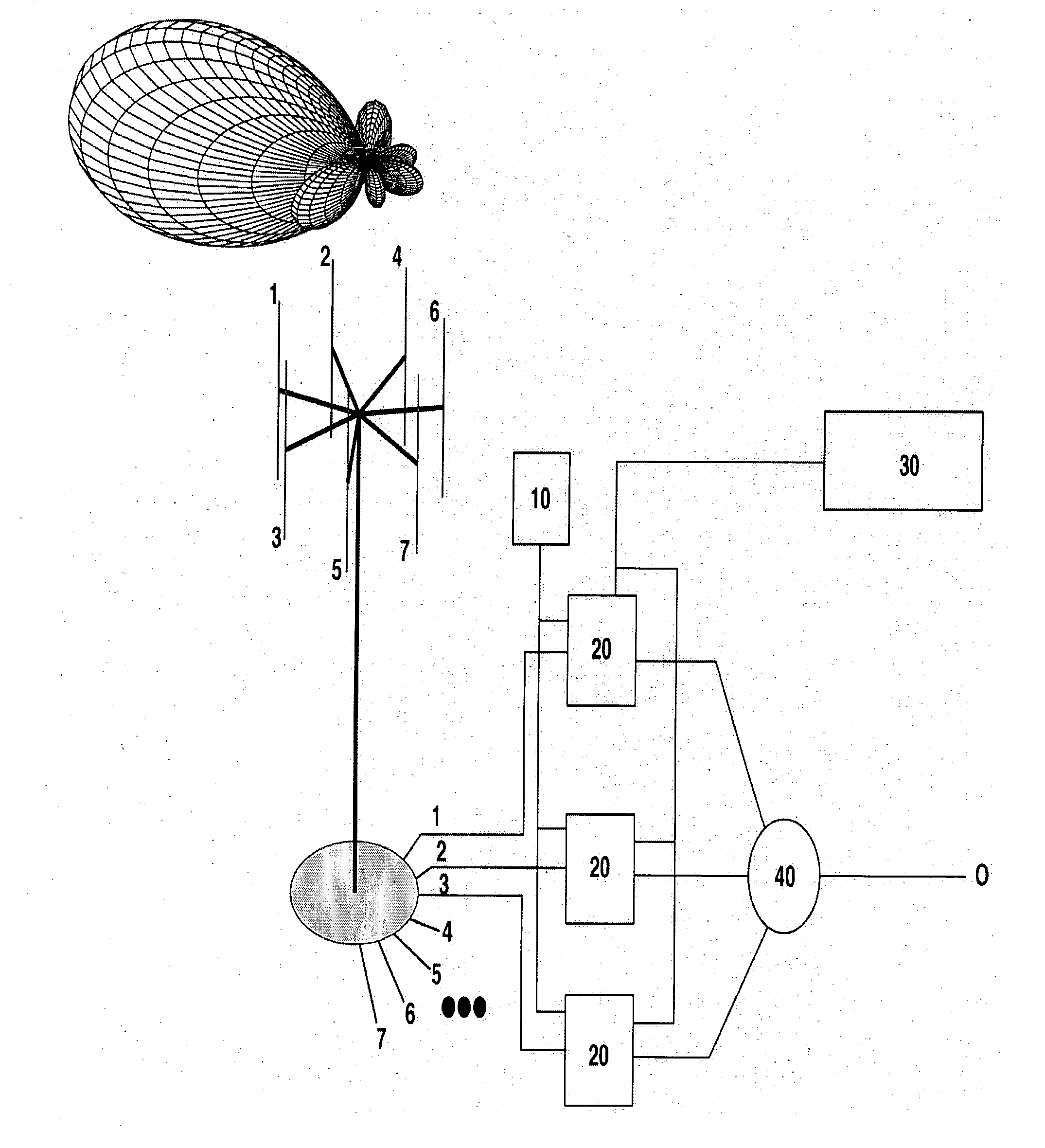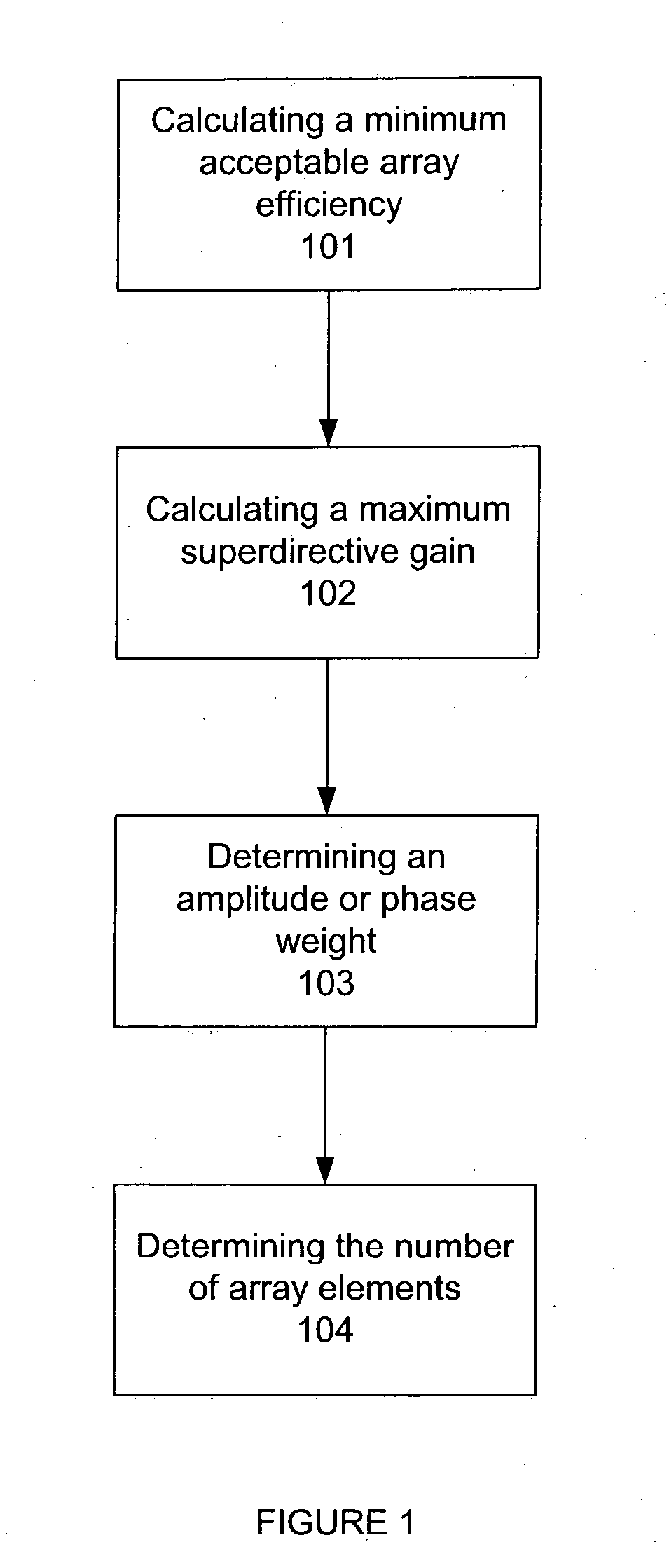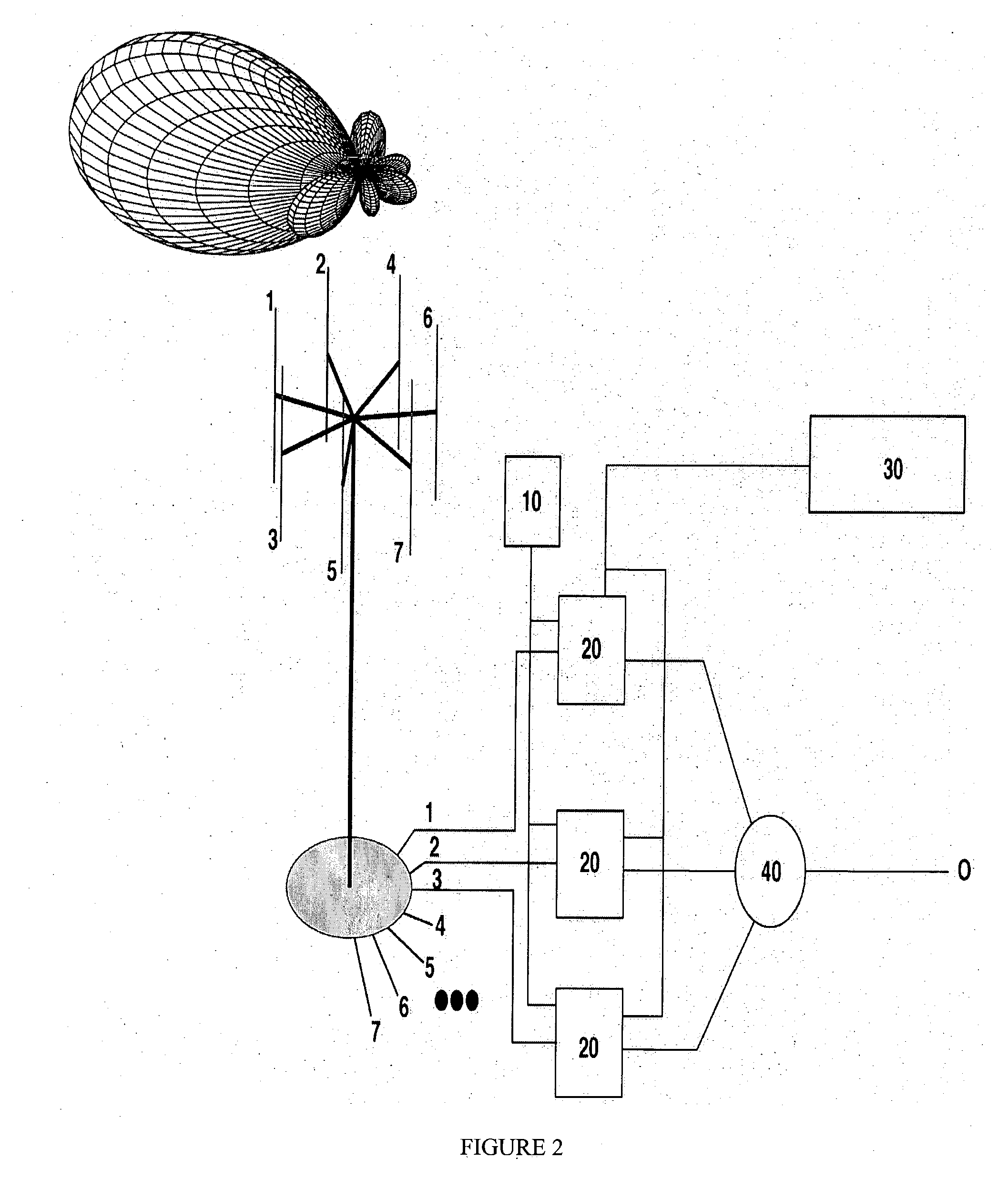Circular superdirective receive antenna arrays
a superdirective and antenna array technology, applied in direction finders using radio waves, polarised antenna unit combinations, instruments, etc., can solve the problems of low efficiency of these arrays, large antenna size needed for high gain and/or efficiency, and low efficiency of mf/hf/vhf systems
- Summary
- Abstract
- Description
- Claims
- Application Information
AI Technical Summary
Benefits of technology
Problems solved by technology
Method used
Image
Examples
Embodiment Construction
The invention and the various features and advantageous details thereof are explained more fully with reference to the nonlimiting embodiments that are illustrated in the accompanying drawings and detailed in the following description. Various substitutions, modifications, additions and / or rearrangements within the spirit and / or scope of the underlying inventive concept will become apparent to those of ordinary skill in the art from this disclosure.
Techniques of the present disclosure can include providing a compact, circular array of antenna elements that realizes any directive gain.
Techniques of the present disclosure can also include maximizing compaction of an antenna array while maintaining the same signal-to-noise ratio.
Phasing schemes like the ones disclosed here supply additional overhead nulling while offering minimal to no sensitivity penalty to desired signals from elsewhere. In this sense, it can be considered an improvement to the superdirective class of arrays d...
PUM
 Login to View More
Login to View More Abstract
Description
Claims
Application Information
 Login to View More
Login to View More - R&D
- Intellectual Property
- Life Sciences
- Materials
- Tech Scout
- Unparalleled Data Quality
- Higher Quality Content
- 60% Fewer Hallucinations
Browse by: Latest US Patents, China's latest patents, Technical Efficacy Thesaurus, Application Domain, Technology Topic, Popular Technical Reports.
© 2025 PatSnap. All rights reserved.Legal|Privacy policy|Modern Slavery Act Transparency Statement|Sitemap|About US| Contact US: help@patsnap.com



